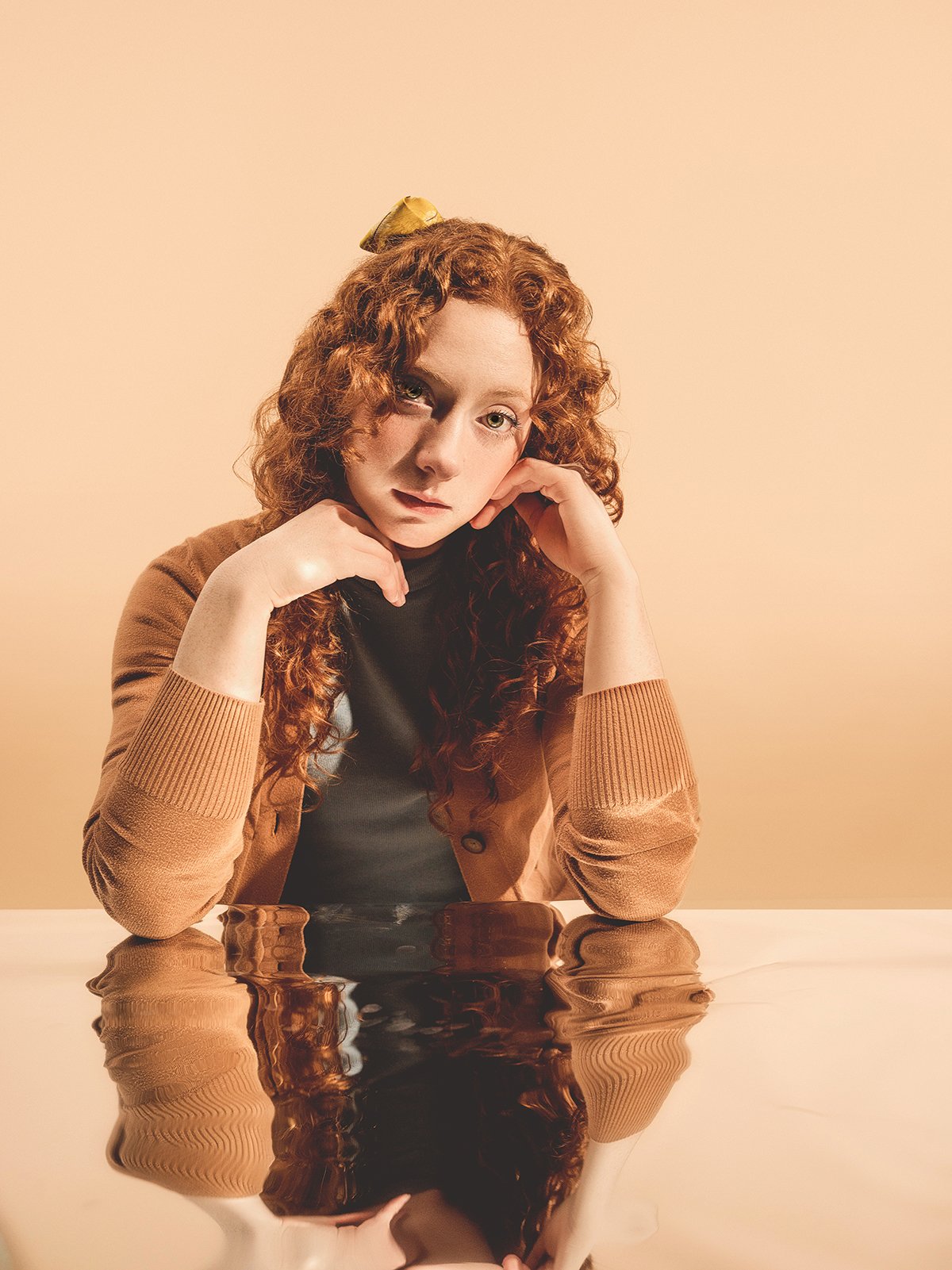‘The Glass Menagerie’ @ The Classics Theatre Project
Photos by Kate Voskova
—Hannah Kneen
Tennessee Williams’ The Glass Menagerie is one of those classic plays that some people think is better left in the past. It may be pretty enough to take out and look at on occasion, but some may find it to be ultimately irrelevant—a bit like the glass animals that become a recurring symbol of fragility in the play. But The Classics Theatre Project, in their “mission to produce relevant classics to enrich the culture of North Texas,” has chosen to breathe life into a story that never really dies.
A story that shouldn’t die. After all, dysfunctional families are eternal.
TCTP’s production, well directed by Jackie L. Kemp, stars Mary-Margaret Pyeatt as Amanda Wingfield, an aging Southern belle and mother to Tom (John Cameron Potts), an aspiring poet/writer longing to escape his family obligations, and his frail and shy sister Laura, played by Katie Wetch. It’s a very good lineup, and each actor’s take on their character mixes well with the others to create a surprisingly multifaceted family.
When Tom opens the show he tells us, “The play is memory. Being a memory play, it is dimly lighted, it is sentimental, it is not realistic. In memory everything seems to happen to music. That explains the fiddle in the wings.”
Thus, a sense of nostalgia pervades this show, built by the technicians and designers and brought into perspective by the actors. The stage is fitted into a tiny theatre in Addison that is not without its charms. It’s aptly named the Old Stone Cottage because it really is a little old stone cottage with a stage inside.
The costumes (designed by Braden Socia) are all appropriate and effective, though Tom’s works particularly well. All black, and almost timeless, the costume suits his status as a character of two times, the one in which the play is set, and the time from which he narrates this story of his memories. The set and props (designed by artistic director Joey Folsom and Socia, with sound and lights by director Kemp) are simple, but work well. The play is set in a St. Louis apartment in the late 1930s. The back wall of the apartment is indicated by simple hanging cloth. The furniture is nothing fancy, as the family is not making much from Tom’s salary and whatever his mother Amanda can scrape together making sales phone calls from home.
Centered and hanging over the stage—as well as the characters’ psyches—is a picture of the fifth character, Mr. Wingfield, Amanda’s long-gone husband and her children’s father. While he never appears onstage as anything more than a photograph, his abandonment of the family leaves a strong mark on all of them. His character, a telephone man who “fell in love with long-distance,” is often described as grinning or smiling in the picture, though the photo used in this production belies that with a very neutral expression. A small missed opportunity; it might have been funny to let the characters acknowledged the incongruity of Father’s happy grin.
The story itself is relatively simple. Amanda, abandoned by her husband, struggles to take care of her children in a financially difficult time. Never too far from recollections of her glory days as a highly sought-after young woman, her great hope is to have Laura married off to a handsome “gentleman caller” as soon as possible. Pyeatt absolutely nails the Southern belle aspects of this character without making her seem like a caricature. For a woman who clearly would be insufferable to live with (she doesn’t even let Tom eat his dinner without a nagging lecture on how to properly do so) she is impressively charming.
Laura’s shyness (and the limp that ties so deeply into that shyness) make living up to her mother’s expectations difficult. The scene she shares with her gentleman caller Jim O’Connor (Jason Craig West) is wonderfully done. I felt an odd mix of humor and pity when Laura was first thrust, floundering, into the uncomfortable position of answering the door to her high-school crush. (Tom has invited him to dinner.) Laura can sometimes come off as willfully and irritatingly helpless. However, I found Wetch’s Laura to be very sympathetic. Her inferiority complex was clearly difficult and often debilitating, but the way she interacted and joked with Tom—and came out of her shell with Jim—gave her a depth that made me really feel for this Laura. (Wetch is understudied by playwright/actor Janae Hatchett, who performs the role on March 9, 15, 23, 21, and April 7.)
On the other hand, struggling under the weight of his mother’s overbearing tendencies and the sense of duty he feels toward his sister, Tom escapes his daily life with frequent trips to the movies. Pott’s Tom and Wetch’s Laura are a pleasantly sweet pair of siblings, and that—combined with his complicated relationship to his mother—make Tom’s struggle with his desire to escape this life much more compelling than it might otherwise be.
Something this production does very well is make it clear that while the family may be dysfunctional, they clearly love each other. Words that could be biting are often delivered in a teasing manner, and while the play is a drama, it has quite a lot of humor in it, too. There’s plenty of sad nostalgia, but the sparks of happiness and human connection throughout really make it worth the pain.
Tennesse Willaims speaks through Tom when he says, “I give you truth in the pleasant disguise of illusion,” because that is exactly what this play does. The Glass Menagerie is full of timeless truths that can and should be heard and enjoyed today.
WHERE: Old Stone Cottage, 15650 Addison Rd., Addison TX
WHEN: March 8-April 13, 2024



